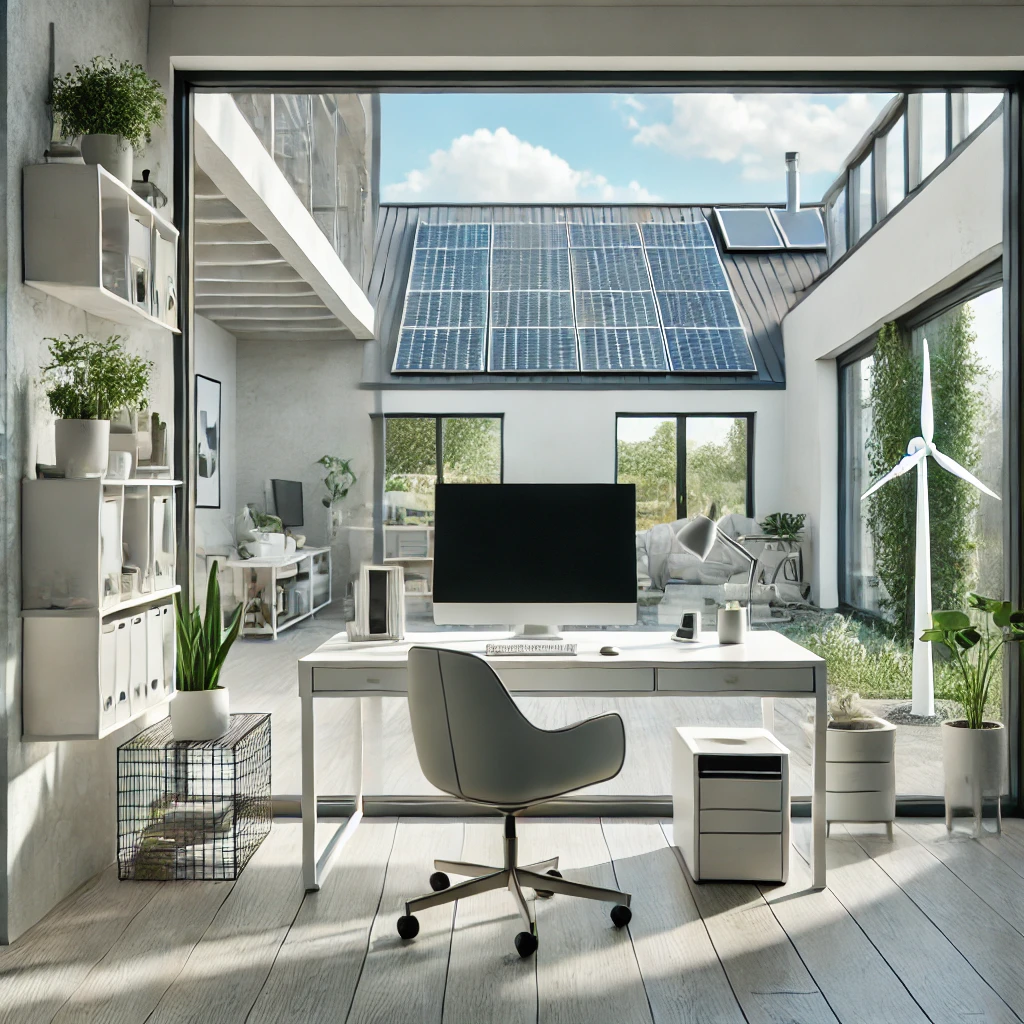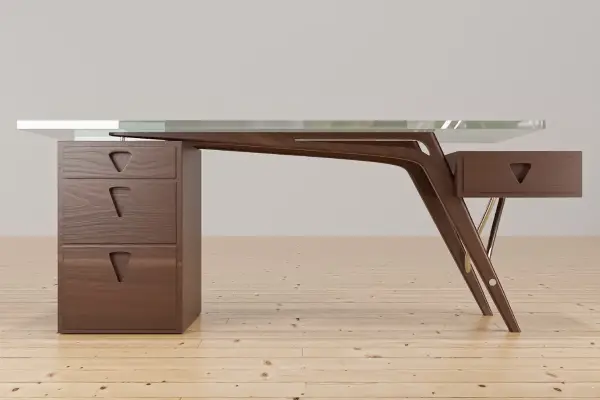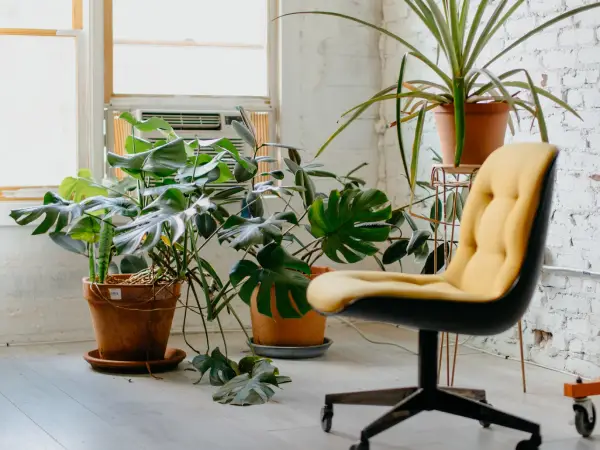Hey there, eco-warriors and minimalist enthusiasts! 🌟 Are you ready to take your minimalist office design to the next level by incorporating some awesome recycling practices? I know I am! There’s something incredibly satisfying about blending simplicity with sustainability, creating a workspace that’s not only sleek and clutter-free but also kind to our beautiful planet.
In this blog post, we’re going to dive into the world of recycling and how you can seamlessly integrate it into your minimalist home office. Whether you’re just starting your minimalism journey or you’re a seasoned pro, I’ve got a ton of tips and tricks that will help you reduce waste and make your office space even more efficient and eco-friendly.
We’ll cover everything from setting up a killer recycling station to choosing the best recycled office supplies and even reducing electronic waste. By the end of this article, you’ll have all the tools and inspiration you need to create a sustainable, waste-free workspace that you can be proud of. So, grab your favorite drink, get comfy, and let’s jump right in! 🌿💼
Understanding the Basics of Recycling
Alright, let’s kick things off by getting down to the nitty-gritty of recycling! Recycling is more than just a buzzword—it’s a powerful way to reduce waste, conserve resources, and help our planet breathe a little easier. So, what exactly is recycling, and why should you care about it in your minimalist office?
Recycling is the process of collecting and processing materials that would otherwise be thrown away as trash and turning them into new products. This simple act can make a huge difference. By recycling, we save energy, reduce greenhouse gas emissions, and cut down on the amount of waste that ends up in landfills. Pretty cool, right?
Now, let’s talk about the types of materials you’ll likely encounter in your office that can be recycled. Here’s a quick rundown:
Paper and Cardboard: This includes everything from old documents and envelopes to packaging materials. Pro tip: shred any sensitive documents before recycling!
Plastics: Bottles, containers, and even some office supplies can be recycled. Just make sure to rinse them out first.
Metals: Think soda cans, paper clips, and old hardware.
Glass: If you have any glass containers or bottles, these can also be recycled, provided they are clean and free of any residues.
By understanding what can be recycled and why it’s important, you’re already halfway to making your office more eco-friendly. Recycling isn’t just about tossing items into the right bin—it’s about creating a more sustainable lifestyle that benefits everyone. Plus, it aligns perfectly with the minimalist mindset of reducing unnecessary waste and clutter.
So, as we move forward, keep these basics in mind. They’ll be the foundation upon which we build your super-efficient, waste-free minimalist office. Ready to design a workspace that’s both stylish and sustainable? Let’s go!
Designing a Minimalist Office with Recycling in Mind
Now that we’ve got a solid understanding of recycling basics, let’s move on to the fun part—designing your minimalist office with recycling at its heart! 🌿🏢
First things first, let’s talk about the principles of minimalist design. Minimalism is all about simplicity, functionality, and beauty. It’s about creating a space that feels open and uncluttered, where everything has a purpose. And guess what? Incorporating recycling into your minimalist office can enhance that sleek, efficient vibe.
Planning Your Office Layout
When designing your office layout, think about how you can make recycling a seamless part of your daily routine. Here are a few tips to get you started:
Centralized Recycling Station: Choose a convenient location for your recycling station. Ideally, it should be easily accessible but not in the way. Consider placing it near your desk or by the door so you can easily drop off recyclable items as you go about your day.
Streamlined Storage Solutions: Use minimalist storage solutions to keep your recycling area tidy. Think sleek bins with clear labels to sort paper, plastic, metal, and glass. Stackable bins can save space and keep everything organized.
Declutter First: Before you set up your recycling station, take some time to declutter your office. Get rid of anything you don’t need or use. This will not only make your space more functional but also make it easier to manage recycling.
Choosing the Right Bins and Containers
The right bins and containers can make all the difference in maintaining a minimalist aesthetic:
Stylish Bins: Look for bins that match your office decor. There are plenty of chic, modern recycling bins available that won’t disrupt your minimalist vibe. Think neutral colors and clean lines.
Labeling: Clearly label each bin to avoid confusion. You can use simple, elegant labels or even custom-designed ones that match your office’s aesthetic.
Hidden Storage: If you prefer to keep bins out of sight, consider hidden storage solutions. Bins can be tucked away in a cabinet or under a desk, maintaining a clean look while still being easily accessible.
Integrating Recycling with Minimalism
Here’s how to seamlessly integrate recycling into your minimalist design:
Functional Decor: Choose office decor that doubles as storage. For example, a stylish basket can hold recyclables, or a sleek wall organizer can keep paper sorted.
Multi-Functional Furniture: Opt for furniture that serves multiple purposes. A desk with built-in recycling compartments can save space and keep your area clutter-free.
Eco-Friendly Materials: When selecting furniture and decor, go for items made from sustainable or recycled materials. This not only supports your recycling efforts but also enhances the eco-friendly nature of your minimalist office.
By designing your office with recycling in mind, you’re not just creating a beautiful, functional space—you’re also making a commitment to sustainability. Your minimalist office will be a shining example of how form and function can come together to create a space that’s as kind to the planet as it is to your productivity.
So, let’s get those creative juices flowing and design an office that’s minimalist, stylish, and sustainably savvy!
Setting Up a Recycling Station
Alright, design aficionados, now that we’ve got our minimalist layout planned, it’s time to set up the heart of our eco-friendly workspace: the recycling station! This is where the magic happens—where we turn everyday office waste into something much more valuable. Let’s dive in and create a recycling station that’s as stylish as it is functional.
Choosing the Perfect Location
First things first, we need to find the ideal spot for our recycling station. Here’s what to consider:
Accessibility: Your recycling station should be easily accessible but not in the way. A great spot is near your desk or by the office door—places you pass by frequently.
Visibility: Keep your recycling bins in sight so you’re constantly reminded to use them. Out of sight often means out of mind, and we want recycling to be a natural part of your routine.
Proximity to Waste Sources: Place your recycling station close to where most waste is generated, like near the printer or the kitchen area if you have one.
Selecting the Right Bins
Next up, let’s talk bins. The right bins can make your recycling station both functional and aesthetically pleasing:
Stylish and Functional: Look for bins that complement your minimalist decor. Think sleek, modern designs in neutral colors like white, black, or gray. There are plenty of chic options out there that won’t disrupt your office’s vibe.
Clear Labels: Clearly label each bin for different types of recyclables—paper, plastic, metal, and glass. You can use minimalist labels or even color-coded stickers to keep things organized and easy to manage.
Size Matters: Choose bin sizes based on your office’s recycling needs. Smaller bins can encourage more frequent emptying, preventing overflow and keeping the area tidy.
Organizing Your Recycling Station
A well-organized recycling station is key to maintaining a minimalist look. Here’s how to keep things neat and efficient:
Stackable Bins: If you’re short on space, consider stackable bins. They save room while still providing separate compartments for each type of recyclable material.
Hidden Storage Options: For a super sleek look, use hidden storage solutions. Bins can be tucked away in cabinets or under your desk, keeping your office looking clean and uncluttered.
Wall-Mounted Bins: Wall-mounted bins are a fantastic space-saving option. They keep the floor clear and can add a modern touch to your office decor.
Making It User-Friendly
Ease of use is crucial for maintaining good recycling habits. Here are some tips to make your station user-friendly:
Easy Access: Ensure that bins are easy to reach and use. Avoid placing them in awkward or hard-to-reach spots.
Regular Maintenance: Set a schedule for emptying and cleaning the bins. Regular maintenance keeps your recycling station looking good and functioning well.
Quick Tips and Reminders: Place a small sign with quick recycling tips near your station. It can be a stylish printout that matches your office decor and serves as a helpful reminder for everyone.
By setting up a well-thought-out recycling station, you’re making recycling an effortless part of your minimalist office routine. Your workspace will not only look amazing but also function efficiently, with every element serving a purpose.
So, let’s get those bins in place, label them up, and turn our office into a beacon of sustainability!
Integrating Recycled and Upcycled Office Supplies
Alright, eco-warriors, it’s time to dive into the world of recycled and upcycled office supplies! This section is all about finding those perfect pieces that not only serve a purpose but also add a touch of sustainability and creativity to your minimalist office. Let’s explore how you can integrate these eco-friendly options into your workspace while keeping it chic and functional.
Finding Recycled Office Supplies
When it comes to choosing office supplies, think green! There are so many amazing products out there made from recycled materials. Here’s what to look for:
Paper Products: Opt for recycled paper for your printer and notepads. Brands like EcoPaper and Green Field Paper Company offer high-quality, recycled paper options that are perfect for everyday use.
Pens and Pencils: Look for pens made from recycled plastic or refillable pens to reduce waste. Brands like Pilot’s B2P (Bottle to Pen) line are made from recycled water bottles. For pencils, check out options made from recycled newspaper or sustainable wood.
Desk Organizers: Find desk organizers made from recycled materials like metal, cardboard, or even plastic. These can help keep your workspace tidy without compromising your commitment to sustainability.
DIY Upcycling Projects
Upcycling is all about creativity! Here are some fun DIY projects to add a unique, personal touch to your office while keeping things eco-friendly:
Tin Can Pencil Holders: Clean out old tin cans and give them a new life as pencil holders. You can paint them to match your office decor or wrap them in recycled paper for a chic, minimalist look.
Cardboard Desk Organizers: Use sturdy cardboard from old boxes to create custom desk organizers. Cut and fold the cardboard into compartments for your office supplies, then decorate them with recycled wrapping paper or fabric.
Glass Jar Storage: Repurpose glass jars as storage for paper clips, rubber bands, and other small items. You can leave them as is for a clean, minimalist look or paint the lids to add a pop of color.
Benefits of Using Recycled and Upcycled Products
Choosing recycled and upcycled office supplies isn’t just good for the environment—it comes with a host of other benefits too:
Unique and Personalized: Upcycled items often have a unique, personalized touch that you won’t find in mass-produced products. This can make your office feel more customized and special.
Cost-Effective: Upcycling can save you money! By repurposing items you already have, you can reduce the need to buy new supplies. Plus, recycled products are often priced competitively with their non-recycled counterparts.
Supports Sustainable Practices: Every recycled or upcycled product you use supports the demand for sustainable practices in manufacturing. This can help drive more companies to adopt eco-friendly methods and materials.
Incorporating Recycled and Upcycled Decor
Don’t forget about decor! Here are some ideas to integrate recycled and upcycled elements into your office design:
Recycled Fabric Cushions: Add some comfort to your office chair with cushions made from recycled fabrics. These can provide a cozy touch while keeping your space eco-friendly.
Upcycled Picture Frames: Use old frames to display artwork or inspirational quotes. You can paint them to match your office theme or leave them as is for a rustic, minimalist look.
Recycled Paper Art: Create wall art using recycled paper. Whether it’s a paper collage, origami, or framed paper cutouts, these can add a creative, eco-friendly flair to your office.
By integrating recycled and upcycled office supplies into your minimalist workspace, you’re not just reducing waste—you’re also adding character, creativity, and a strong commitment to sustainability.
Digital Alternatives to Reduce Paper Waste
Alright, digital pioneers, it’s time to tackle one of the biggest sources of office waste: paper. But don’t worry, we’re going to do it the minimalist way—by going digital! Embracing digital alternatives not only slashes your paper usage but also streamlines your workflow and keeps your workspace clutter-free. Let’s dive into some tech-savvy strategies that will revolutionize your minimalist office.
The Advantages of Going Paperless
Going paperless is a game-changer for any minimalist office. Here’s why you’ll love making the switch:
Clutter-Free Workspace: No more piles of papers and overflowing files. A digital workspace is clean, organized, and visually appealing.
Efficiency and Accessibility: Digital documents are easy to organize, search, and access from anywhere. This means no more rummaging through stacks of paper to find what you need.
Environmental Impact: Reducing paper usage is a direct way to conserve trees, water, and energy, contributing to a healthier planet.
Tools and Apps for Digital Document Management
Ready to ditch the paper? These tools and apps will help you manage your digital documents with ease:
Cloud Storage: Services like Google Drive, Dropbox, and OneDrive offer secure storage and easy access to your documents from any device. Plus, you can share files with colleagues in a snap.
Note-Taking Apps: Say goodbye to sticky notes and paper notebooks. Apps like Evernote, Microsoft OneNote, and Notion let you take, organize, and sync notes across all your devices.
PDF Tools: Use PDF management tools like Adobe Acrobat or PDFescape to edit, sign, and share documents digitally. This eliminates the need for printing and scanning.
Task Management: Keep track of your to-dos and projects with digital task management tools like Trello, Asana, or Todoist. These apps help you stay organized without relying on paper lists.
Strategies for Reducing Paper Usage
Going digital is a journey, and every little step helps. Here are some practical strategies to cut down on paper:
Digital Invoicing and Billing: Switch to electronic invoices and bills. Not only does this save paper, but it also speeds up the payment process and improves record-keeping.
Online Forms and Signatures: Use digital forms and e-signature tools like DocuSign or HelloSign. This reduces the need for printing and makes document signing quick and easy.
Scan and Shred: Scan important paper documents and store them digitally. Once scanned, shred the originals to reduce physical clutter.
Email and Cloud Collaboration: Share documents via email or cloud collaboration tools instead of printing. Real-time collaboration tools like Google Docs and Microsoft Teams can also enhance teamwork without generating paper waste.
Creating a Paperless Routine
Making the shift to a digital office requires a bit of habit-changing. Here’s how to build a paperless routine:
Digital First: Whenever possible, choose digital over paper. This includes reading news, taking notes, and storing documents.
Regular Decluttering: Periodically review and digitize any remaining paper documents. Keep only what’s necessary and recycle the rest.
Educate and Encourage: If you share your workspace with others, educate them about the benefits of going paperless and encourage them to adopt digital habits too.
Embracing the Paperless Office Culture
Building a paperless culture in your office can be empowering and motivating. Here’s how to foster it:
Celebrate Milestones: Celebrate milestones and achievements in your paperless journey. Whether it’s a month of zero paper use or hitting a new record in digital document storage, acknowledge the progress.
Stay Updated: Keep up with the latest digital tools and trends. This can help you find new ways to improve your paperless practices.
Feedback Loop: Encourage feedback and suggestions from your team. This can lead to new ideas and better implementation of paperless strategies.
By embracing digital alternatives, you’re not just reducing paper waste—you’re creating a more efficient, organized, and eco-friendly office. Your minimalist workspace will thrive on the simplicity and effectiveness of a paperless approach.
So, let’s power up those devices, dive into the digital world, and make our minimalist offices more sustainable and clutter-free than ever! 🌟💻📱
Recycling Electronics and E-Waste
Hey tech-savvy minimalists! Now that we’ve streamlined our paper usage, let’s tackle another significant part of office waste: electronics. From old gadgets to outdated hardware, electronic waste (or e-waste) is a growing concern. But don’t worry—we’re here to guide you on how to recycle electronics responsibly and keep your minimalist office sustainable and clutter-free. Let’s get started!
Proper Disposal Methods for Electronic Waste
Electronics can’t just be tossed in the regular trash—there are specific methods for disposing of e-waste to prevent environmental harm. Here’s what you need to know:
Local Recycling Programs: Many cities and towns have special e-waste recycling programs. Check with your local waste management facility to find out where you can drop off old electronics.
Retailer Take-Back Programs: Some electronics retailers offer take-back programs. Stores like Best Buy, Staples, and Apple accept old devices and ensure they are recycled properly.
Manufacturer Programs: Many electronics manufacturers have recycling programs. Brands like Dell, HP, and Samsung often provide options for returning old products for recycling.
Tips for Recycling and Repurposing Old Electronics
Before you get rid of your old electronics, consider these tips for recycling and repurposing:
Back Up and Wipe Data: Always back up important data and wipe your devices clean before recycling. This protects your privacy and ensures no sensitive information is left behind.
Repurpose for Other Uses: Sometimes, old devices can be repurposed. An old tablet could serve as a dedicated e-reader or digital photo frame. Get creative with how you can give your gadgets a second life.
Donate to Charities: If your electronics are still in good working condition, consider donating them. Many schools, libraries, and non-profits can benefit from gently used devices.
Resources and Programs for E-Waste Recycling
Navigating the world of e-waste recycling can be a bit overwhelming, but there are plenty of resources to help you out:
Earth911: This website offers a comprehensive recycling search tool. Simply enter your zip code and the type of e-waste you need to recycle, and it will provide a list of nearby recycling centers.
Call2Recycle: Specializing in battery recycling, Call2Recycle offers drop-off locations for rechargeable batteries and cellphones across North America.
e-Stewards: This organization certifies recyclers that adhere to high environmental and ethical standards. Using an e-Stewards certified recycler ensures your e-waste is handled responsibly.
Creating a Sustainable E-Waste Management Plan
To keep your minimalist office e-waste-free, develop a sustainable management plan. Here’s how:
Regular Audits: Conduct regular audits of your electronic devices. Identify items you no longer use or need and recycle them appropriately.
Maintenance and Repairs: Extend the life of your electronics through regular maintenance and repairs. Fixing devices instead of replacing them can reduce e-waste significantly.
Eco-Friendly Purchases: When buying new electronics, consider eco-friendly options. Look for products with energy-efficient ratings, recyclable materials, and longer life spans.
Incorporating E-Waste Recycling into Your Office Culture
Promote a culture of sustainability by incorporating e-waste recycling into your office practices:
E-Waste Collection Days: Organize regular e-waste collection days where everyone can bring in their old electronics for proper disposal.
Educational Workshops: Host workshops to educate your team about the importance of e-waste recycling and how they can participate.
Incentive Programs: Create incentives for employees who actively participate in e-waste recycling efforts. Recognition and rewards can motivate everyone to contribute.
By addressing e-waste responsibly, you’re not only keeping your minimalist office clutter-free but also making a significant positive impact on the environment. Every device recycled is a step toward a more sustainable future.
So, let’s gear up, recycle those old gadgets, and keep our minimalist offices clean and green!
Sustainable Office Supplies: Choosing Eco-Friendly Options
Alright, eco-enthusiasts, let’s talk about stocking your minimalist office with sustainable office supplies! From pens and notebooks to cleaning products, every item you bring into your workspace can be a step toward a greener, more sustainable office. Let’s explore how to make eco-friendly choices that align with your minimalist ethos and keep your office both functional and environmentally conscious.
Eco-Friendly Office Supplies to Consider
There are plenty of sustainable office supplies out there that combine functionality with eco-friendliness. Here are some top picks:
Recycled Paper Products: Opt for notebooks, sticky notes, and printer paper made from recycled materials. Brands like Tree-Free and Greenline Paper offer great options.
Sustainable Writing Instruments: Choose pens and pencils made from recycled materials or sustainable resources. Pilot’s B2P pens are made from recycled water bottles, and Sprout pencils can be planted after use to grow herbs or flowers.
Non-Toxic Cleaning Supplies: Keep your office clean with eco-friendly, non-toxic cleaning products. Brands like Seventh Generation and Method offer effective and environmentally safe options.
Evaluating Eco-Friendly Claims
Not all products labeled “eco-friendly” are created equal. Here’s how to evaluate their sustainability:
Look for Certifications: Certifications like FSC (Forest Stewardship Council), Green Seal, and Energy Star are good indicators that a product meets certain environmental standards.
Check the Materials: Read labels to see what materials are used. Look for products made from recycled, biodegradable, or sustainably sourced materials.
Consider the Packaging: Choose products with minimal or recyclable packaging. Reducing packaging waste is a key part of maintaining a sustainable office.
Eco-Friendly Stationery and Desk Accessories
Your desk accessories can be eco-friendly too! Here are some stylish and sustainable options:
Bamboo Desk Organizers: Bamboo is a fast-growing, renewable resource. Bamboo desk organizers, file holders, and trays are durable and sustainable choices.
Recycled Plastic or Metal Accessories: Many brands offer desk accessories made from recycled plastic or metal. These items can add a modern, minimalist touch to your office while being kind to the planet.
Cork Boards: Cork is a renewable resource and makes for great bulletin boards or desk mats. It’s durable, stylish, and eco-friendly.
Sustainable Packaging and Shipping Supplies
If you frequently ship items from your office, opt for sustainable packaging:
Recycled Boxes: Use boxes made from recycled cardboard. They’re just as sturdy and help reduce waste.
Biodegradable Packing Materials: Instead of bubble wrap, use biodegradable packing peanuts or shredded recycled paper to protect your shipments.
Eco-Friendly Tape: Choose tape made from recycled materials or biodegradable adhesive to seal your packages.
Supporting Sustainable Brands
When possible, support brands that prioritize sustainability:
Green Companies: Many companies are committed to eco-friendly practices and transparency. Do some research to find brands that align with your values.
Local and Small Businesses: Supporting local and small businesses can reduce your carbon footprint and contribute to your community’s economy. Look for eco-friendly office supplies from local vendors.
Reducing Waste with Multi-Functional Products
Multi-functional products can help you reduce waste and maintain a minimalist office:
Multi-Function Printers: Choose printers that combine printing, scanning, copying, and faxing in one device to save space and energy.
Reusable Supplies: Invest in reusable items like refillable pens, cloth rags instead of paper towels, and reusable water bottles and coffee mugs.
By thoughtfully selecting eco-friendly office supplies, you’re making a significant impact on your office’s sustainability. Every recycled pen, biodegradable cleaner, and bamboo organizer contributes to a greener workspace and a healthier planet.
Energy-Efficient Lighting and Equipment
Hello, sustainability champions! Now that we’ve covered eco-friendly supplies and recycling, let’s shine a light on energy-efficient lighting and equipment for your minimalist office. Switching to energy-efficient options can drastically reduce your carbon footprint, lower your electricity bills, and create a brighter, more productive workspace. Here’s how to illuminate your office sustainably and stylishly.
Benefits of Energy-Efficient Lighting
Energy-efficient lighting is a cornerstone of a sustainable office. Here’s why making the switch is a bright idea:
Reduced Energy Consumption: LED and CFL bulbs use significantly less energy than traditional incandescent bulbs, helping you cut down on electricity usage.
Longer Lifespan: Energy-efficient bulbs last much longer, meaning fewer replacements and less waste.
Cost Savings: Although they might cost more upfront, energy-efficient bulbs save money in the long run through lower energy bills and reduced replacement costs.
Choosing the Right Energy-Efficient Bulbs
When selecting bulbs for your office, here are some key points to consider:
LED Bulbs: LED (Light Emitting Diode) bulbs are the most energy-efficient option available. They use up to 80% less energy than traditional bulbs and can last up to 25 times longer.
CFL Bulbs: Compact Fluorescent Lamps (CFLs) are another good choice. They use about 70% less energy than incandescent bulbs and have a lifespan of about 10,000 hours.
Smart Bulbs: Consider investing in smart bulbs that can be controlled via your smartphone or voice assistant. These bulbs often come with energy-saving features like scheduling, dimming, and motion sensors.
Maximizing Natural Light
Harnessing natural light can enhance your workspace while reducing the need for artificial lighting. Here’s how to make the most of it:
Position Your Desk: Place your desk near windows to take advantage of natural light. This not only saves energy but also boosts your mood and productivity.
Use Light Colors: Light-colored walls and furniture reflect natural light, making your office brighter without additional lighting.
Avoid Obstructions: Keep windows clear of obstructions like heavy curtains or large furniture to maximize the amount of natural light entering your space.
Energy-Efficient Office Equipment
Beyond lighting, choosing energy-efficient office equipment is crucial for a sustainable office. Here are some tips:
Energy Star Certification: Look for the Energy Star label when purchasing office equipment. Energy Star-certified products meet strict energy efficiency guidelines set by the U.S. Environmental Protection Agency.
Power Management Features: Opt for devices with power management features, such as sleep mode or automatic shut-off, to save energy when they’re not in use.
Multi-Function Devices: Choose multi-function devices that combine printing, scanning, copying, and faxing. These all-in-one machines consume less energy than separate devices.
Tips for Reducing Energy Consumption
Implement these strategies to further reduce energy consumption in your office:
Unplug Devices: Unplug electronics when they’re not in use to prevent “phantom” energy drain. Alternatively, use a smart power strip that automatically cuts power to devices in standby mode.
Adjust Thermostat Settings: Set your thermostat to an energy-saving temperature when the office is unoccupied. Programmable thermostats can automatically adjust settings based on your schedule.
Regular Maintenance: Keep your equipment in good condition with regular maintenance. Clean and service devices to ensure they’re operating efficiently.
Incorporating Renewable Energy Sources
Take your commitment to sustainability a step further by incorporating renewable energy sources:
Solar Panels: If feasible, consider installing solar panels to power your office. Solar energy is a clean, renewable source that can significantly reduce your reliance on fossil fuels.
Green Energy Plans: Check with your utility provider about green energy plans that support renewable energy production. This is an easy way to make your office’s energy consumption more sustainable.
By embracing energy-efficient lighting and equipment, you’re creating a workspace that’s not only eco-friendly but also cost-effective and conducive to productivity. Every energy-saving step contributes to a greener office and a healthier planet.
So, let’s light up our minimalist offices with sustainable solutions that shine bright for both the environment and our productivity!
Maintaining a Sustainable Minimalist Office: Tips and Tricks
As we wrap up our journey through creating a sustainable minimalist office, let’s talk about how to maintain this eco-friendly space over the long haul. Keeping your office sustainable isn’t just about one-time changes; it’s an ongoing commitment to making conscious choices every day. Here are some practical tips and tricks to help you maintain a green, minimalist office that’s efficient, organized, and environmentally friendly.
1. Continuous Decluttering and Organization
A minimalist office thrives on simplicity and organization. Regularly assess your space to keep it clutter-free:
Quarterly Purge: Set aside time every few months to go through your office and remove unnecessary items. Donate, recycle, or properly dispose of anything you no longer need.
Digital Declutter: Don’t forget about your digital space. Regularly clean out your email inbox, organize digital files, and back up important documents. A tidy digital environment complements your physical space.
2. Sustainable Purchasing Habits
When it’s time to restock or upgrade, make mindful purchasing decisions:
Quality Over Quantity: Invest in high-quality, durable items that will last longer, reducing the need for frequent replacements.
Eco-Friendly Choices: Prioritize products with eco-friendly certifications, sustainable materials, and minimal packaging. Support brands that are transparent about their environmental practices.
3. Energy Efficiency Practices
Sustainability in your office extends to how you manage energy consumption:
Turn Off Electronics: Make it a habit to turn off computers, monitors, and other electronics when they’re not in use. This simple step can significantly reduce energy waste.
Smart Power Strips: Use smart power strips that automatically cut off power to devices when they’re not in use. This helps prevent “phantom” energy consumption.
4. Water Conservation
Even in an office setting, there are ways to conserve water:
Fix Leaks Promptly: Keep an eye on faucets and water dispensers. A dripping faucet can waste a surprising amount of water over time.
Water-Efficient Appliances: If you have a kitchen or bathroom in your office, consider installing water-efficient fixtures like low-flow faucets and dual-flush toilets.
5. Encouraging a Sustainable Office Culture
Foster a culture of sustainability among everyone who uses the office:
Lead by Example: Be a role model for sustainable practices. Your commitment can inspire others to follow suit.
Team Involvement: Encourage colleagues or employees to share their own green ideas and practices. Consider forming a sustainability committee to brainstorm and implement new initiatives.
Green Office Challenges: Organize friendly competitions, like a “zero-waste week” or “bike to work day,” to motivate and engage your team in sustainable activities.
6. Stay Informed and Evolve
Sustainability is a dynamic field, and staying informed helps you continuously improve:
Keep Learning: Stay up to date with the latest trends and innovations in sustainability. Follow relevant blogs, subscribe to newsletters, and attend workshops or webinars.
Be Flexible: Be open to changing your practices as you learn more. Adapting to new information and technologies can enhance your office’s sustainability efforts.
7. Community and Local Engagement
Extend your sustainable practices beyond the office:
Support Local Businesses: Whenever possible, purchase supplies and services from local businesses to reduce your carbon footprint and support your community.
Participate in Community Events: Get involved in local environmental events and initiatives. This not only helps the environment but also strengthens your community ties.
By continuously embracing these tips and tricks, you’ll maintain a sustainable minimalist office that not only looks great but also supports a healthy planet. Sustainability is an ongoing journey, and each small action contributes to a larger positive impact.
Thank you for joining us on this journey to create a greener, more minimalist office space. Remember, every choice you make matters, and together, we can make a significant difference. Let’s continue to work towards a more sustainable future, one office at a time.






